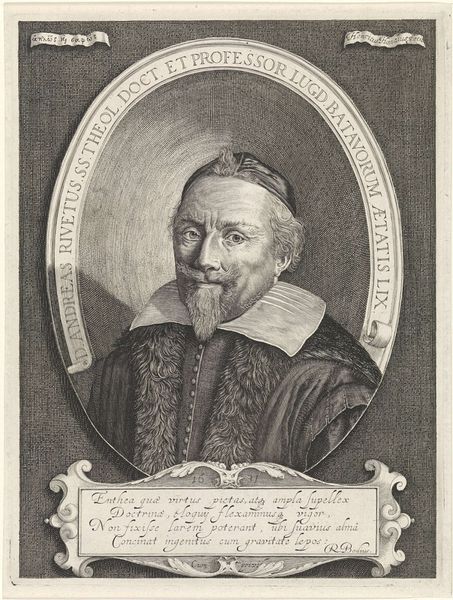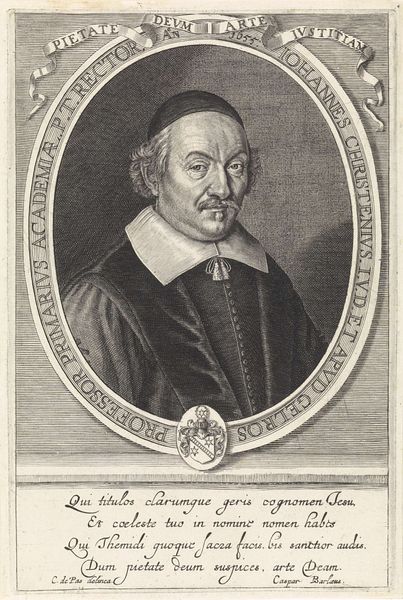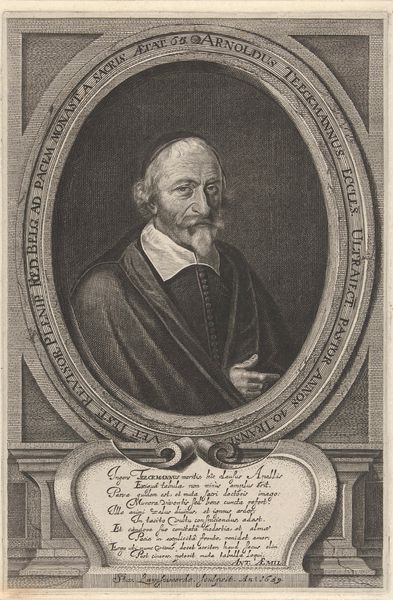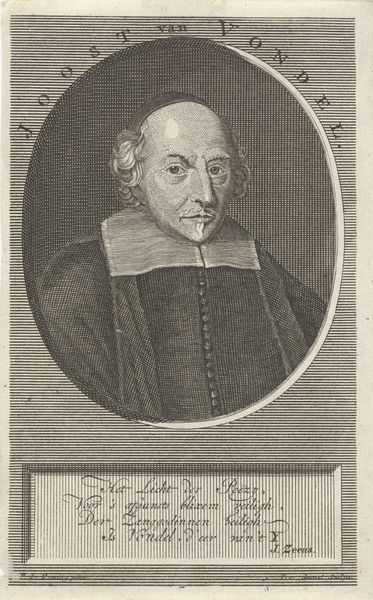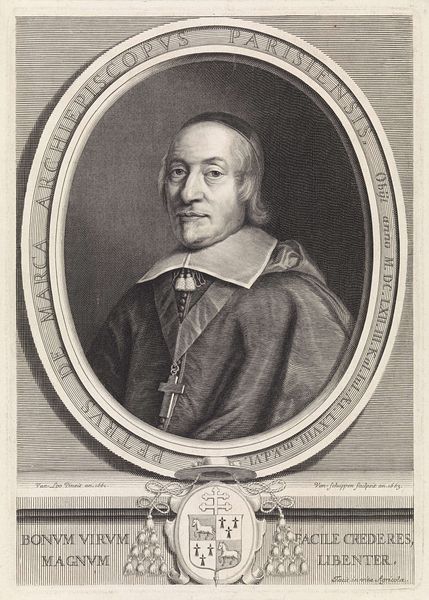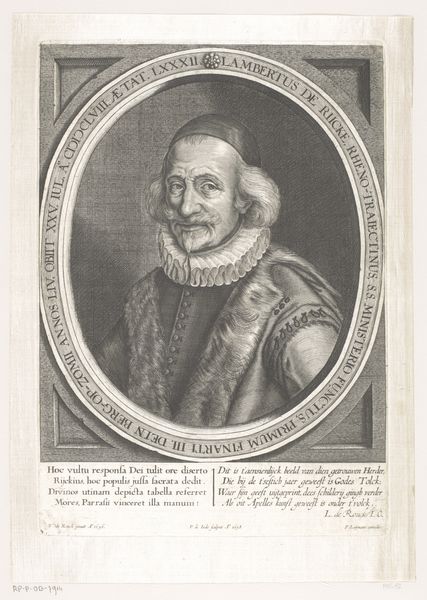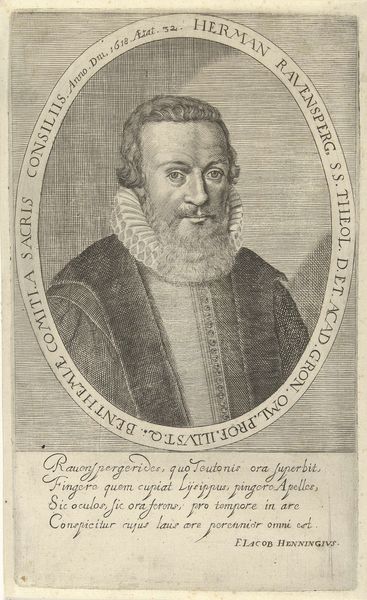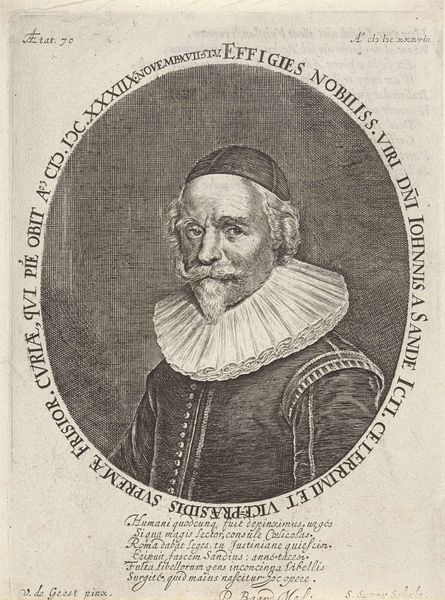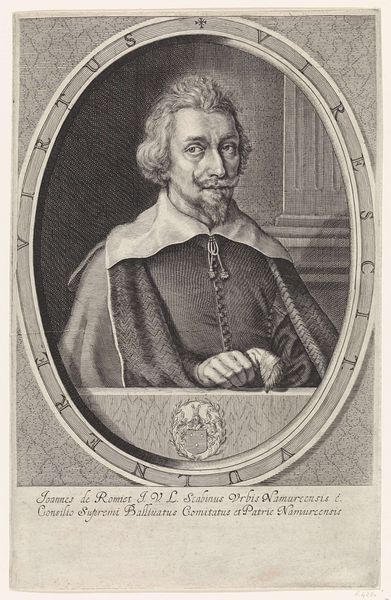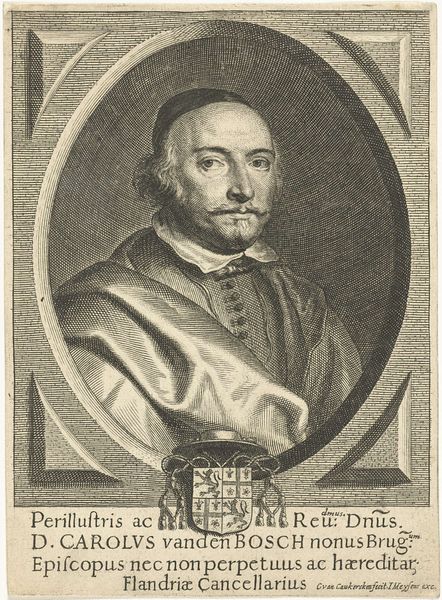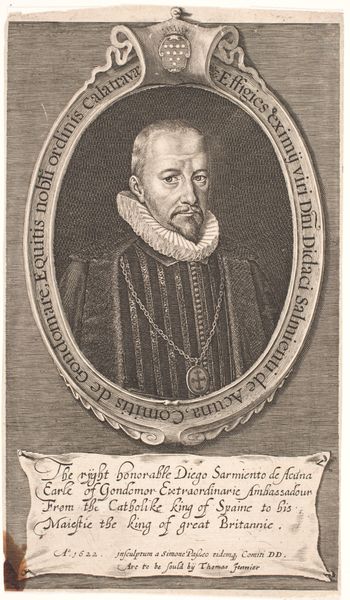
print, engraving
#
portrait
#
baroque
# print
#
old engraving style
#
portrait reference
#
engraving
Dimensions: height 208 mm, width 130 mm
Copyright: Rijks Museum: Open Domain
Curator: Here we have Jacob van Meurs's 1655 engraving, "Portret van Henricus van Diest," currently held in the Rijksmuseum. Editor: My immediate reaction is of a formidable but kindly man, framed by that dense Latin inscription; there is a sense of establishment and erudition. The ornate oval feels weighty. Curator: It's fascinating how van Meurs employs these framing devices and carefully considered typography to convey not just a likeness, but the weight of religious authority. The man represented, Henricus van Diest, was after all, a prominent theologian and pastor. The cross emblem is an obvious indication of religious affiliation. Editor: Exactly. He occupies a specific position of power and status within 17th century Dutch society, doesn't he? We have to also look at how dress and presentation signify gendered and class identities during the Baroque era. The subtle detail and formality speak volumes about hierarchical structures in religious and academic circles. Curator: The choice of print, particularly engraving, feels particularly relevant as well. This artwork allows wider circulation; ensuring van Diest's image, along with the inscription lauding him, would have been seen across different communities of learning. The engraving itself mirrors qualities appreciated by Baroque tastes, like ornamentation and meticulous precision. Editor: Precisely, yet consider how this accessibility potentially democratized representation in a way that differed from traditional portraiture. Engravings made images less precious and made them more potent vehicles of propaganda and ideological formation during a period characterized by fierce religious conflict and reformations. Who could afford such a representation and why? Curator: It's amazing how the textures are realized purely through line work, and how this single layer holds so much representational weight. There is incredible subtlety in the rendering of van Diest's features. Editor: Right, while it celebrates an individual, it concurrently embeds him within webs of power, religion, and historical circumstance, prompting us to investigate who benefits from his remembered image today and the way social hierarchies impact image-making. Curator: Looking closely allows one to reflect on the man himself. A fascinating look into history, indeed! Editor: This piece allows us a valuable portal into the complexities of 17th-century culture and ongoing dialogues about influence and social power, presented with the clean refinement of printmaking.
Comments
No comments
Be the first to comment and join the conversation on the ultimate creative platform.
